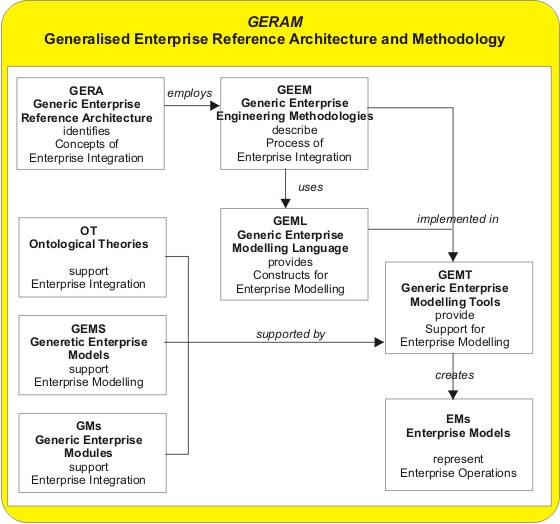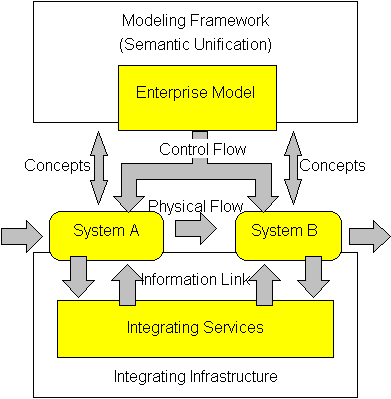|
James G. Nell
James G. "Jim" Nell (born 1938) is an American engineer. He was the principal investigator of the Manufacturing Enterprise Integration Project at the National Institute of Standards and Technology (NIST), and is known for his work on enterprise integration. Biography Nell received his Bachelor of Science in Electrical Engineering (BSEE) from Drexel University and his MBA from Bowling Green State University. Peter Bernus, L. Nemes (1996) ''Modelling and methodologies for enterprise integration''. p. 68 From 1961 until 1993 Nell worked at Westinghouse Electric Company in various assignments in systems engineering, international marketing, program management, and strategic planning and finally Manager of Information Technology Programs at the Manufacturing Systems and Technology Center of Westinghouse Electric Corporation in Columbia, Maryland. From 1993 to 2000 at NIST he was the principal investigator of the Manufacturing Enterprise Integration Project. [...More Info...] [...Related Items...] OR: [Wikipedia] [Google] [Baidu] |
James G
James is a common English language surname and given name: *James (name), the typically masculine first name James * James (surname), various people with the last name James James or James City may also refer to: People * King James (other), various kings named James * Saint James (other) * James (musician) * James, brother of Jesus Places Canada * James Bay, a large body of water * James, Ontario United Kingdom * James College, a college of the University of York United States * James, Georgia, an unincorporated community * James, Iowa, an unincorporated community * James City, North Carolina * James City County, Virginia ** James City (Virginia Company) ** James City Shire * James City, Pennsylvania * St. James City, Florida Arts, entertainment, and media * ''James'' (2005 film), a Bollywood film * ''James'' (2008 film), an Irish short film * ''James'' (2022 film), an Indian Kannada-language film * James the Red Engine, a character in ''Thomas the Ta ... [...More Info...] [...Related Items...] OR: [Wikipedia] [Google] [Baidu] |
GERAM Framework
Generalised Enterprise Reference Architecture and Methodology (GERAM) is a generalised enterprise architecture framework for enterprise integration and business process engineering. It identifies the set of components recommended for use in enterprise engineering. J.G. Nell, NIST (1997).An Overview of GERAM ICEIMT'97 International Conference on Enterprise Integration Modelling Technology 1997. Updated 30 January 1997 This framework was developed in the 1990s by a joint task force of both the International Federation of Automatic Control (IFAC) and the International Federation of Information Processing (IFIP) on enterprise architectures for enterprise integration. The development started with the evaluation of then-existing frameworks for enterprise application integration, which was developed into an overall definition of a so-called "generalised architecture". P. Bernus, and L. Nemes (1994). "A Framework to Define a Generic Enterprise Reference Architecture and Methodology". In: ... [...More Info...] [...Related Items...] OR: [Wikipedia] [Google] [Baidu] |
Living People
Related categories * :Year of birth missing (living people) / :Year of birth unknown * :Date of birth missing (living people) / :Date of birth unknown * :Place of birth missing (living people) / :Place of birth unknown * :Year of death missing / :Year of death unknown * :Date of death missing / :Date of death unknown * :Place of death missing / :Place of death unknown * :Missing middle or first names See also * :Dead people * :Template:L, which generates this category or death years, and birth year and sort keys. : {{DEFAULTSORT:Living people 21st-century people People by status ... [...More Info...] [...Related Items...] OR: [Wikipedia] [Google] [Baidu] |
1938 Births
Events January * January 1 ** The new constitution of Estonia enters into force, which many consider to be the ending of the Era of Silence and the authoritarian regime. ** State-owned railway networks are created by merger, in France (SNCF) and the Netherlands (Nederlandse Spoorwegen – NS). * January 20 – King Farouk of Egypt marries Safinaz Zulficar, who becomes Queen Farida, in Cairo. * January 27 – The Honeymoon Bridge at Niagara Falls, New York, collapses as a result of an ice jam. February * February 4 ** Adolf Hitler abolishes the War Ministry and creates the Oberkommando der Wehrmacht (High Command of the Armed Forces), giving him direct control of the German military. In addition, he dismisses political and military leaders considered unsympathetic to his philosophy or policies. General Werner von Fritsch is forced to resign as Commander of Chief of the German Army following accusations of homosexuality, and replaced by General Walther von ... [...More Info...] [...Related Items...] OR: [Wikipedia] [Google] [Baidu] |
Business Process Interoperability
Business process interoperability (BPI) is a property referring to the ability of diverse business processes to work together, to so called "inter-operate". It is a state that exists when a business process can meet a specific objective automatically utilizing essential human labor only. Typically, BPI is present when a process conforms to standards that enable it to achieve its objective regardless of ownership, location, make, version or design of the computer systems used. Overview The main attraction of BPI is that a business process can start and finish at any point worldwide regardless of the types of hardware and software required to automate it. Because of its capacity to offload human "mind" labor, BPI is considered by many as the final stage in the evolution of business computing. BPI's twin criteria of ''specific objective'' and ''essential human labor'' are both subjective. The objectives of BPI vary, but tend to fall into the following categories: * Enable end-to-en ... [...More Info...] [...Related Items...] OR: [Wikipedia] [Google] [Baidu] |
Evolution In Enterprise Integration
Evolution is change in the heritable characteristics of biological populations over successive generations. These characteristics are the expressions of genes, which are passed on from parent to offspring during reproduction. Variation tends to exist within any given population as a result of genetic mutation and recombination. Evolution occurs when evolutionary processes such as natural selection (including sexual selection) and genetic drift act on this variation, resulting in certain characteristics becoming more common or more rare within a population. The evolutionary pressures that determine whether a characteristic is common or rare within a population constantly change, resulting in a change in heritable characteristics arising over successive generations. It is this process of evolution that has given rise to biodiversity at every level of biological organisation, including the levels of species, individual organisms, and molecules. The theory of evolution by n ... [...More Info...] [...Related Items...] OR: [Wikipedia] [Google] [Baidu] |
Kurt Kosanke
Kurt Kosanke (born ca. 1945) is a German engineer, retired IBM manager, director of the AMICE Consortium and consultant, known for his work in the field of enterprise engineering, Enterprise integration and CIMOSA.Arturo Molina, José M. Sánchez, Andrew Kusiak (1998) ''Handbook of Life Cycle Engineering: Concepts, Models and Technologies''. p. 234 Life and work Kosanke obtained his Engineering degree from the Physikalisch Technische Lehranstalt in Lübeck, Germany, nowadays the Private Berufsfachschule PTL Wedel. He started his career in research and development at IBM Deutschland in Böblingen working on the instrument development of optical printers and large-scale displays. In the 4 years at IBM USA he worked on production control, material logistics, and back in Germany focussed on manufacturing research and simulation. In 1984 Kosanke started participating in the ESPRIT AMICE project as IBM Deutschland representative, focussing on enterprise modelling and CIM Open System ... [...More Info...] [...Related Items...] OR: [Wikipedia] [Google] [Baidu] |
Information Integration
Information integration (II) is the merging of information from heterogeneous sources with differing conceptual, contextual and typographical representations. It is used in data mining and consolidation of data from unstructured or semi-structured resources. Typically, ''information integration'' refers to textual representations of knowledge but is sometimes applied to rich-media content. Information fusion, which is a related term, involves the combination of information into a new set of information towards reducing redundancy and uncertainty. Examples of technologies available to integrate information include deduplication, and string metrics which allow the detection of similar text in different data sources by fuzzy matching. A host of methods for these research areas are available such as those presented in the International Society of Information Fusion. Other methods rely on causal estimates of the outcomes based on a model of the sources.P.K. Davis, D. Manheim, W.L. Per ... [...More Info...] [...Related Items...] OR: [Wikipedia] [Google] [Baidu] |
Computer-integrated Manufacturing
Computer-integrated manufacturing (CIM) is the manufacturing approach of using computers to control the entire production process. This integration allows individual processes to exchange information with each part. Manufacturing can be faster and less error-prone by the integration of computers. Typically CIM relies on closed-loop control processes based on real-time input from sensors. It is also known as ''flexible design and manufacturing''. Overview # Computer-integrated manufacturing is used in automotive, aviation, space, and ship building industries. # The term "computer-integrated manufacturing" is both a method of manufacturing and the name of a computer-automated system in which individual engineering, production, marketing, and support functions of a manufacturing enterprise are organized. # In a CIM system functional areas such as design, analysis, planning, purchasing, cost accounting, inventory control, and distribution are linked through the computer with fa ... [...More Info...] [...Related Items...] OR: [Wikipedia] [Google] [Baidu] |
Enterprise Integration
Enterprise integration is a technical field of enterprise architecture, which is focused on the study of topics such as system interconnection, electronic data interchange, product data exchange and distributed computing environments. It is a concept in enterprise engineering to provide the relevant information and thereby enable communication between people, machines and computers and their efficient co-operation and co-ordination. The Generalised Enterprise Reference Architecture and Methodology (GERAM) framework defined by the IFAC/IFIP Task Force provides the necessary guidance of the modelling process, see figure, and enables semantic unification of the model contents as well. The framework identifies the set of components necessary and helpful for enterprise modelling. The general concepts identified and defined in the reference architecture consist of life cycle, life history, model views among others. These concept help the user to create and maintain the process models ... [...More Info...] [...Related Items...] OR: [Wikipedia] [Google] [Baidu] |
International Federation Of Information Processing
The International Federation for Information Processing (IFIP) is a global organisation for researchers and professionals working in the field of computing to conduct research, develop standards and promote information sharing. Established in 1960 under the auspices of UNESCO, IFIP is recognised by the United Nations and links some 50 national and international societies and academies of science with a total membership of over half a million professionals. IFIP is based in Laxenburg, Austria and is an international, non-governmental organisation that operates on a non-profit basis. Overview IFIP activities are coordinated by 13 Technical Committees (TCs) which are organised into more than 100 Working Groups (WGs), bringing together over 3,500 Information and communications technology, ICT professionals and researchers from around the world to conduct research, develop standards and promote information sharing. Each TC covers a particular aspect of computing and related disciplin ... [...More Info...] [...Related Items...] OR: [Wikipedia] [Google] [Baidu] |





